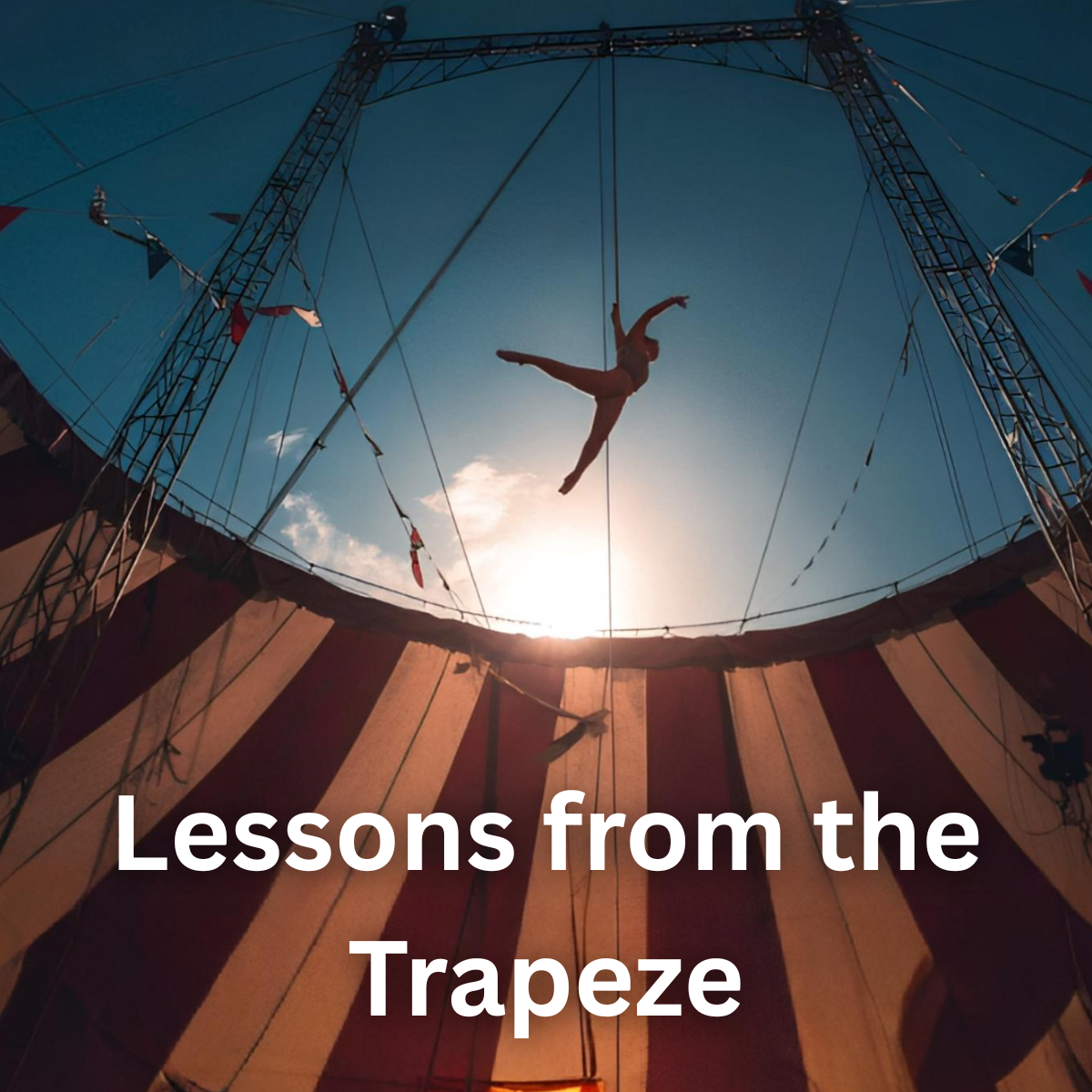I once stood under the big top after a show and spoke with a trapeze artist. The tent had gone quiet, the crowd had drifted away, and the rigging still hummed with a little energy. I asked about the moment when a flyer lets go. The answer was simple and sharp. You do your job in the air, and you trust your partner to be there. You do not hesitate. If you pause and wonder you miss the catch.
That conversation has followed me into work. My business partner recently used the same picture to describe what we are trying to build together. Our company is not a circus, and our moves are not as intricate, yet the principle holds. If we must stop to question whether someone will do their part, we already lost the rhythm. We need a culture where people swing on time, reach on time, and catch on time. That is what trust feels like when it is lived, not just spoken.
The trapeze does not work with partial trust. That is not a romantic language, that is physics. Any hesitation adds distance, and distance adds gravity. The flyer cannot carry both the stunt and the doubt. The catcher cannot adjust for uncertainty that should have been settled before the climb. In a high performance team the same law applies. If I am halfway sold on your commitment, if I keep a hedge in my mind just in case, then something is already off in our relationship. We either fix that gap together, or we accept that we are not ready for difficult work.
So what does it take to build the kind of trust that lets a person fly without a second thought?
First, role clarity. On the platform you know the count, the grip, the timing, and the arc. In the office you know the definition of done, the owner, the deadline, and the standard. Ambiguity is where distrust breeds.
Second, visible practice. Trapeze partners rehearse the catch a thousand times. Teams rehearse with small promises kept on time. A short daily stand, a closed loop on a customer issue, a clear readout on progress. Repetition creates proof, proof creates confidence.
Third, honest feedback. Flyers and catchers talk about misses without drama. We need the same reflex. Was the hand late? Was the swing flat?Was the spec vague? Say it clean, then adjust.
Fourth, shared consequences. When a pair misses a catch, they both learn. When a team misses a milestone, leaders speak in the first person. No throwing anyone off the platform. We own our results.
Fifth, character on display. Skill gets you onto the bar, character keeps you there. Do you show up early? Do you tell the truth when you are wrong? Do you take the hard task without being asked? These are the small fires that forge trust.
There is a final lesson from the trapeze that I remind myself of often. Trust is not blind. It is earned, then guarded. If it breaks, it breaks loudly, and we should treat that alarm with respect. Either we repair with candor and action, or we make a change. Keeping a quiet reserve of doubt while pretending to commit is the worst of both worlds. It ruins the jump and insults the catcher.
If you sense hesitation on your team today, you can do something about it before the next swing.
- Name the catch that matters this week. Put the count in writing.
- Ask each person to declare what they are doing to make the catch inevitable.
- Practice in public. Short updates, honest notes, specific asks.
- Close the loop. Celebrate the catch, or study the miss without blame.
- Make one promise you can keep by the end of the day. Then keep it.
We learn to fly by keeping small promises until big promises feel normal. In time, the space between letting go and being caught becomes the most trustworthy part of the work. You do your job in the air, and you know your partner will be there. That is how teams do brave things, and do them again tomorrow.




